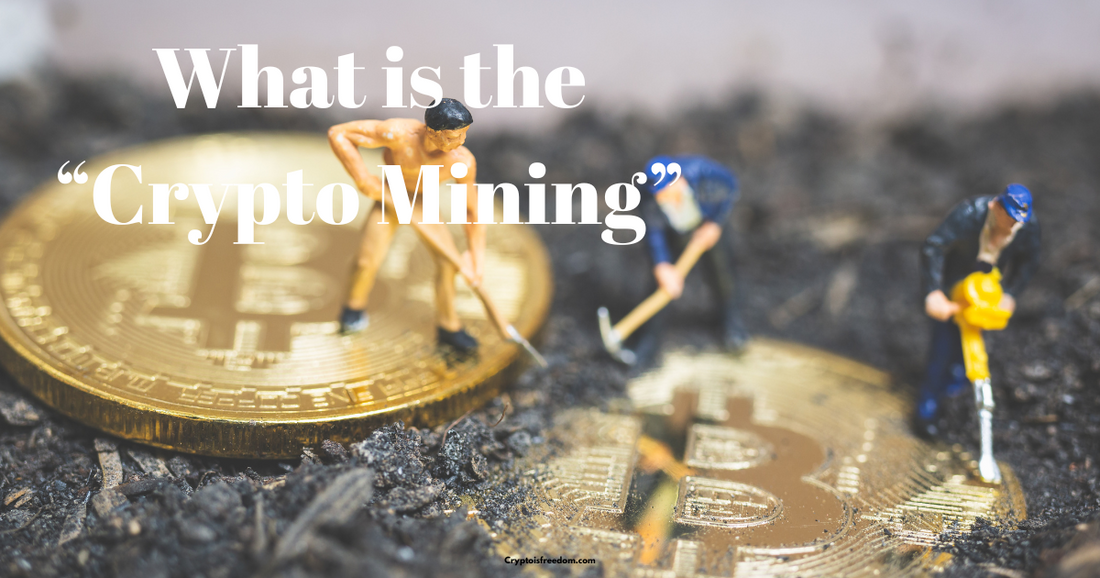
What is Crypto Mining? Types, How to Start & Is It Worth It in 2025
Share
Crypto mining is one of the core pillars of the cryptocurrency world. It's how new coins are created, how transactions are verified, and how the entire blockchain stays secure and decentralized.
Whether you’re a beginner or someone who’s curious about how crypto mining works, this guide will break down the basics, the different types of mining, and how to get started.
What is Crypto Mining?
Crypto mining is the process of validating transactions and adding them to a blockchain ledger. In return for this work, miners are rewarded with cryptocurrency — for example, Bitcoin or Ethereum.
It’s like solving complex math problems with your computer to help keep the network running — and you get paid in crypto for it.
Why Does Crypto Need Mining?
-
To validate and secure transactions
-
To prevent double-spending
-
To add new blocks to the blockchain
-
To release new coins into circulation (like a digital mint)
Types of Crypto Mining
There are several ways to mine cryptocurrencies, and each comes with its pros, cons, and technical requirements:
1. Proof of Work (PoW) Mining
-
Most common type (used by Bitcoin)
-
Requires powerful computers (ASICs or GPUs)
-
Competitive — you race other miners to solve cryptographic puzzles
2. Cloud Mining
-
Rent mining power from a company
-
No need to own hardware
-
Good for beginners, but watch out for scams
3. CPU Mining
-
Mines using your computer’s CPU
-
Very outdated for most coins (low reward, high electricity usage)
-
Still used for some smaller altcoins
4. GPU Mining
-
Uses graphics cards (GPUs)
-
Great for coins like Ethereum Classic, Ravencoin, etc.
-
A good balance between performance and flexibility
5. ASIC Mining
-
Application-Specific Integrated Circuit miners
-
Extremely powerful, but expensive
-
Only useful for specific coins like Bitcoin, Litecoin, etc.
How to Start Crypto Mining
Getting started with mining doesn't have to be overwhelming. Here's a step-by-step breakdown:
Step 1: Choose Your Coin
-
Bitcoin – requires expensive ASICs
-
Ethereum Classic, Kaspa, Ravencoin – can be mined with GPUs
-
Monero – one of the few CPU-mineable coins
Step 2: Pick the Right Hardware
-
ASICs for Bitcoin, Litecoin, etc.
-
GPUs (like NVIDIA RTX series) for altcoins
-
Entry-level rigs: ~$500–$1000
-
Pro rigs: $2000+
Step 3: Set Up a Wallet
-
You need a place to receive your mined coins
-
Choose a wallet that supports your coin (hardware or software)
Step 4: Join a Mining Pool
-
Mining alone is tough — pools combine your power with others
-
You get smaller, more frequent rewards
-
Example pools: Slush Pool, F2Pool, Ethermine
Step 5: Download Mining Software
-
Depends on the coin and your hardware
-
Examples: CGMiner, NiceHash, PhoenixMiner, lolMiner
Step 6: Start Mining
-
Run the software, connect to the pool, and start earning
-
Monitor temperature, performance, and hash rate regularly
Costs and Risks of Mining
Mining can be profitable, but there are challenges to consider:
| Factor | Risk/Cost |
|---|---|
| Electricity | High power usage = high bills |
| Hardware | Expensive to buy, can wear out |
| Heat & Noise | Mining rigs get hot and loud |
| Regulation | Some countries have banned or taxed mining |
| Market Fluctuation | Crypto prices affect profitability |
Is Mining Still Worth It in 2025?
Yes — but not for everyone.
-
If you live in a region with cheap electricity
-
If you’re mining efficient altcoins
-
If you’re tech-savvy and enjoy tinkering
If not, staking, trading, or buying and holding might be better entry points into crypto.
Final Thoughts
Crypto mining isn’t just about making money — it’s about supporting decentralization and freedom in the digital economy. As we move towards a future where financial systems are changing fast, mining remains one of the most powerful ways to be part of that shift.
Whether you're building your first mining rig or just renting hash power in the cloud, always do your research, manage your costs, and focus on long-term sustainability.